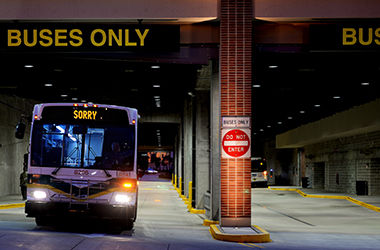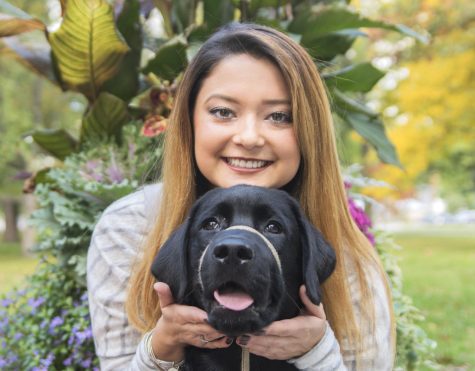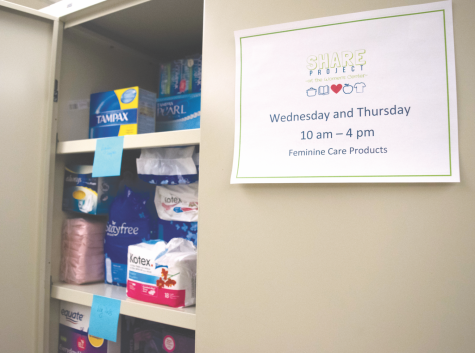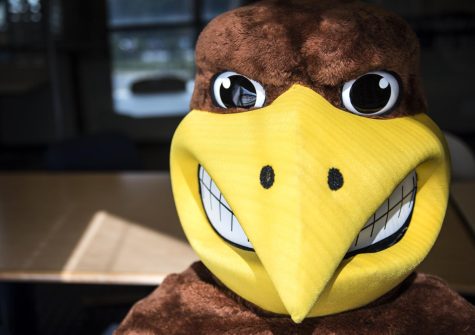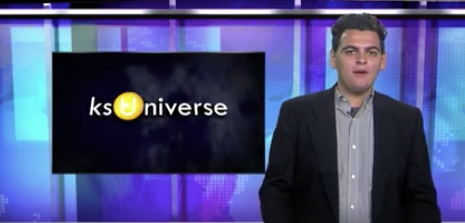PARTA bus routes leave students confused
September 2, 2014
It’s a Thursday afternoon and junior Nic Talbott is making daily rounds in his bus up Loop Road. A student with a Flashes drawstring backpack walks up shyly to the yellow line, and Talbott asks him how he could be of help.
“How do I stop the bus?” the student says.
After one semester as a PARTA bus driver, Talbott isn’t surprised.
“I still have juniors and seniors come up to me asking how to get around campus,” he said. “Much more than you’d think.”
Student drivers, like Talbott, hold to the notion the university’s bus system may not come easy to first-time users, and, as the junior sociology major said, even for students that have been exposed to the transit system for three, even four years.
Talbott said even with the three-part Destination Kent State program for first-year students, people don’t understand the transit system because “they don’t tell you any of that in DKS. They just expect you to learn how to ride the bus by yourself.”
Talbott is talking about the First-Year Experience course, a one-credit hour class dedicated to what DKS program director Megan Cisar said is to “assist students with transitioning to the university” along with giving freshmen tools and resources to help them become acclimated with Kent State.
Transitioning to the university is one thing, but how about transitioning around?
Cisar, who leads her own FYE course every semester, said that although the course is generally aimed to foster students’ critical thinking skills, clarify their purpose at college and identify appropriate university resources, there’s no specific requirement for an education in transportation. Instead, she said, it’s up to the teachers themselves.
Some FYE instructors, Cisar said, opt to have transportation as part of their curriculum, while others only mention it briefly. There are some professors, she said, that even go as far as taking their FYE class on campus-wide PARTA trips in hopes they’ll learn by doing, while “getting a tour” of the university itself.
As for Cisar, acting as a tour guide isn’t exactly part of her syllabus. Rather than dive unnecessarily into “what route stops where” or “how to get to Cleveland,” she allows questions and concerns to come up organically in (her) class. Through this ask-and-tell approach, she said, she can meet the variety of needs of students, many of whom may be from neighborhoods where public transportation is a part of their day-to-day life.
PARTA seems to share a similar philosophy.
As part of their partnership with Kent State, PARTA not only has shuttle services that operate for free seven days a week but coordinates annual outreach as well. It was present at Kent State’s Welcome Weekend and Summer Student Orientation via the company’s Opening of School Committee, which tells students how the bus system works and where it goes around the university. They also boast a staff of “mobility management” employees, who also assist in “travel training,” a free service intended to help students to “learn how to ride the bus.”
Bryan Smith, director of planning at PARTA, said the extent of PARTA’s outreach to students should suffice for around-campus transportation purposes. With only three main campus routes — Campus Loop, Allerton and Stadium — Smith said that their names are self-descriptive and go where students believe they might go.
For on-campus routes, Smith said PARTA’s goal is similar to that of Apple products.
“You really don’t need to learn how to use them,” he said. “You just pick them up — they’re intuitive.”
But Smith, who has worked at PARTA since 1995 when he was a campus bus driver, understands that off-campus destinations may require some more awareness and education. He said that some students may not realize that, through PARTA, they have the ability to ride to Cleveland and Akron daily, or simply to the neighboring city of Stow — both of which he admitted are certainly less intuitive.
But as far as help getting around campus, Smith said there’s always someone at PARTA available to answer questions, especially for those that may not be used to public transportation.
Chris Greger, a freshman computer information systems major, said that his FYE class didn’t tell him anything about how to tackle the campus bus routes, other than just inform him about the PARTA website. Originally from Brunswick, Ohio, Greger said that, as a relative newcomer to public buses, it wouldn’t hurt to be already prepped with basic knowledge.
“What, am I going to take five minutes to find out how to get (to the Stadium)?” he said. “And by that time, I may have already missed the bus.”
Zach Fanning, a freshman computer science major, said he doesn’t remember being told much in DKS about Kent State’s public transportation and has gotten around campus mostly via his two-wheeler skateboard. Fanning feels that the “self-descriptive” names of the routes may still need a little more explanation.
“They really just tell you the name of the route and expect that you can find out yourself to where it goes,” he said.
Holly Wilcox, a junior pre-nursing major, recently transferred to Kent State from her hometown of Pittsburgh. Wilcox, who spent her first week figuring out what route leads to Midway Drive, said that not even some fourth-year students could help her. One girl, a senior, when Wilcox asked for direction, told her to “take the Stadium bus.”
“I don’t think she knew either,” Wilcox said.
Although Wilcox is a transfer student, she said that any FYE course would come in handy if it included transportation education.
“I would take that course just to learn how to ride the bus,” she said.
Concerning any further outreach efforts, like visiting an FYE classroom, Smith said that he would always be open to an opportunity to better the PARTA method of getting information to students.
But do most FYE instructors see a need for more “how-to” bus education?
“Not necessarily,” Cisar said.
Contact Mark Oprea at [email protected].


